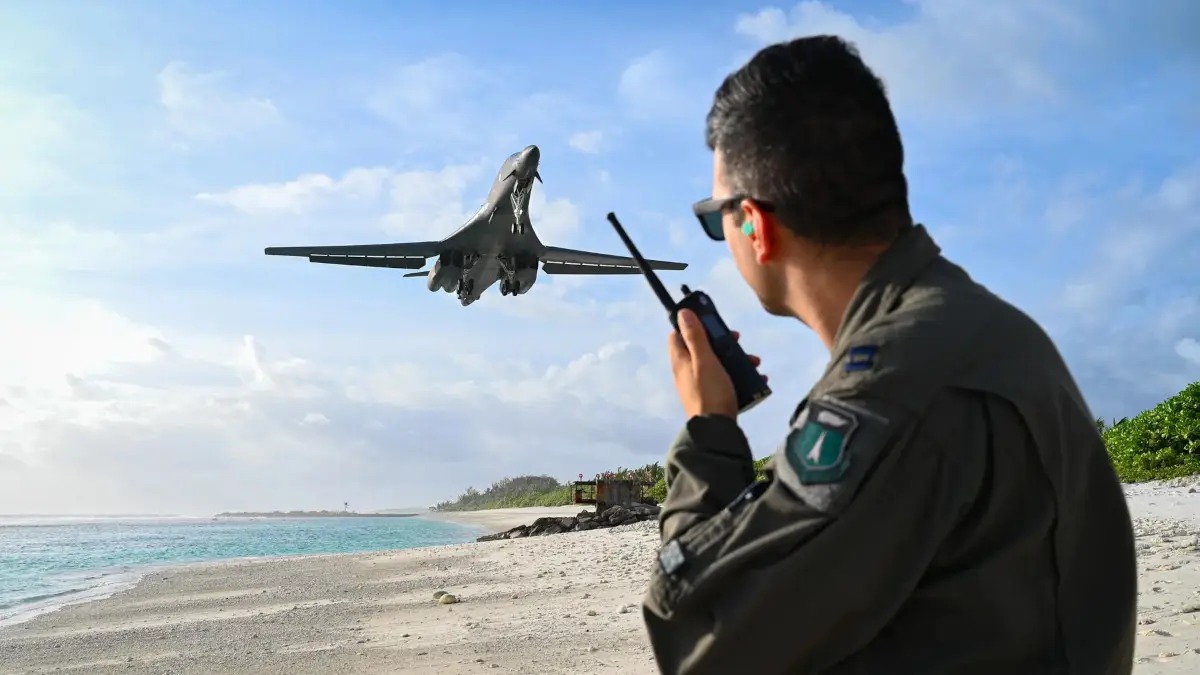On January 16, the two B-1B strategic bombers, which had made an emergency landing at the US Air Force Kadena Air Base in Japan on December 20, 2023, departed from the base, reported Japan-based Ryukyu Shimpo newspaper.
The report said the bombers returned to their home base, Ellsworth Air Force Base in South Dakota, at approximately 9 a.m. on January 16.
The emergency landing occurred last year following joint air drills conducted by Japan, the United States, and South Korea in response to North Korea’s intercontinental ballistic missile (ICBM) launch.
At the time, the arrival of these aircraft at Kadena Air Base marked the first instance of a B-1B bomber flying to the base since 1996.
After the emergency landing, the bombers were parked at Kadena Air Base for an extended period, leading to speculation about the possible motives behind their prolonged stay.
Some analysts suggested that the decision to keep these aircraft at Kadena Air Base might have been influenced by concerns related to China, possibly in anticipation of Taiwan’s presidential election on January 13, 2024.
The presence of US bombers in the region has seen a rise, driven by North Korea’s continuous advancement in nuclear capabilities and escalating threats from Russia and China.
In the face of these challenges, non-nuclear allies of Washington increasingly depend on US bombers to display a visible deterrent.
Meanwhile, a recent incident involving a B-1B strategic bomber has garnered attention, as it crashed while attempting to land at Ellsworth Air Force Base on January 4.
Reports indicate that the mishap occurred amid adverse weather conditions, including below-freezing temperatures and dense fog that severely limited visibility.
Situated in the Black Hills of South Dakota near Rapid City, Ellsworth Air Force Base is one of only two bases for B-1 bombers. The base houses the 28th Bomb Wing, which operates a fleet of over 20 B-1s, contributing to the Air Force’s inventory of 45 B-1 bombers.
Notably, Ellsworth is expected to receive the first operational B-21 Raider stealth bombers, slated to replace the existing B-1 fleet entirely.
B-1B Long Range Bomber
The B-1 is a versatile, long-range conventional bomber that has been integral to the Air Force since the 1980s. One of the defining characteristics of the B-1B is its versatility in mission profiles.
In 1994, the United States terminated the nuclear mission for the B-1. However, it remains an essential multi-mission platform capable of carrying the largest conventional payload in the Air Force inventory.
Whether deploying precision or non-precision weapons, the B-1B can swiftly engage adversaries anywhere in the world, making it an indispensable component of America’s defense strategy.
The B-1B’s design incorporates a blended wing/body configuration, variable-geometry wings, and turbofan after-burning engines, providing a unique blend of long-range capability, maneuverability, and high speed.
This design allows the aircraft to seamlessly adapt to various flight scenarios, utilizing forward wing settings for takeoffs, landings, air refueling, and specific high-altitude operations while employing aft wing sweep settings during high subsonic and supersonic flights for enhanced maneuverability.
Equipped with cutting-edge technology, the B-1B boasts a synthetic aperture radar capable of tracking and engaging moving vehicles, self-targeting, and operating in terrain-following modes.
The aircraft’s Global Positioning System-aided Inertial Navigation System ensures precise navigation and target engagement, while a fully integrated data link with Link-16 capability enhances battlefield awareness and connectivity.

Furthermore, the B-1B’s speed, handling characteristics, and substantial payload allow seamless integration into mixed-force packages. Its onboard self-protection electronic jamming equipment, radar warning receiver (ALQ-161), expendable countermeasures system, and towed decoy system (ALE-50) collectively form a robust defense system.
The ALQ-161 electronic countermeasures system, capable of detecting and countering a wide range of adversary threat emitters, adds a layer of protection during operations.
As a critical element of joint/composite strike forces, the B-1B Lancer symbolizes American airpower superiority. Its significance persists even after being relieved of its nuclear-capable status, underscoring the aircraft’s crucial role in executing strategic missions for the US Air Force.
With its exceptional capabilities, state-of-the-art technology, and strategic incorporation, the B-1B remains crucial to safeguarding the security of the United States and its allied nations amid escalating tensions with countries such as Russia and China.
- Contact the author at ashishmichel(at)gmail.com
- Follow EurAsian Times on Google News